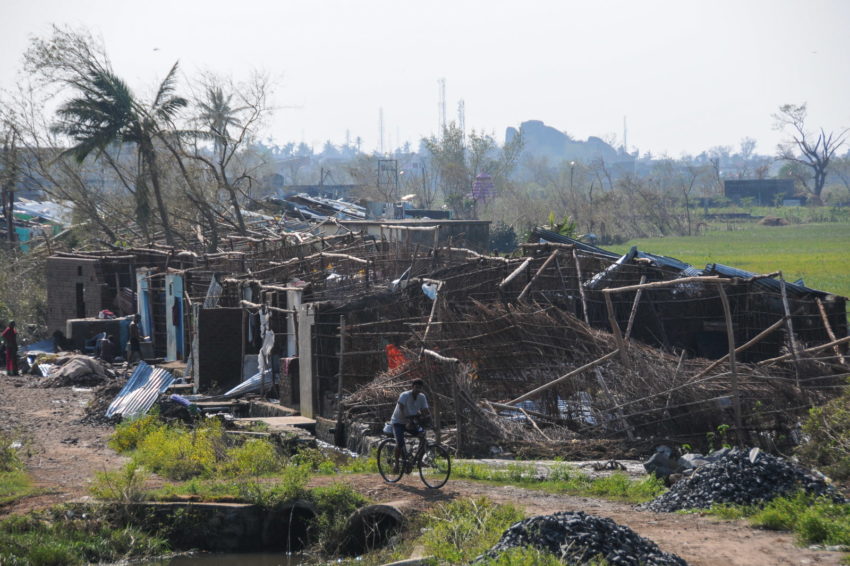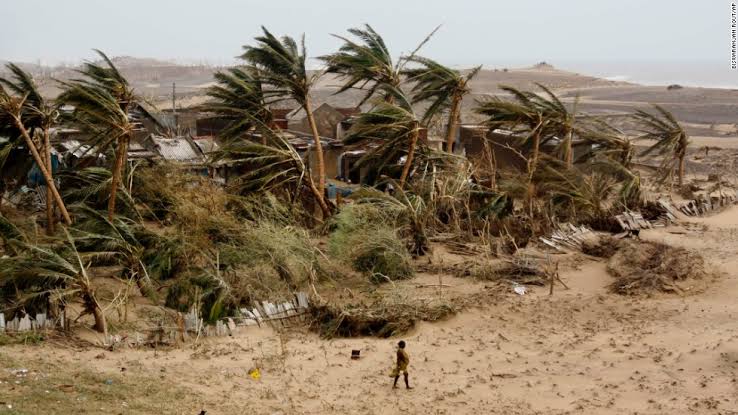Remembering 1999 Super Cyclone: Transformation of Odisha From A Silent Victim To a Resilient Defender
Bhubaneswar: It was on this day of 1999 that Odisha saw its most devastating natural calamity in over a century – the Super Cyclone, which left an indelible mark in the lives of millions of people. More than ten thousand people died and fifteen million directly affected by the catastrophe. The Super Cyclone left a trail of destruction that saw more than two million houses damaged and a loss to property that is innumerable in monetary terms. October 29th 1999 will be remembered forever for it gave us a lesson on how brutal the calamities can be to mankind. While salvaging the destruction became the need of the hour, it gave an occasion for all to think about disaster mitigation. It gave us an opportunity to improve… to rebuild … to transform and to see for ourselves a new millennium that is less vulnerable to natural calamities. The Super Cyclone of 1999 opened up the road for a resilient Odisha that is strong enough to face any fury.
The immediate efforts required after the Cyclone were vigorous relief and rehabilitation with a humane approach. While rebuilding efforts began with the government taking numerous measures, a long term disaster mitigation and management policy became necessary.
The newly formed government of Odisha led by Chief Minister Naveen Patnaik had a herculean task before it. While providing immediate care to the affected people remained the priority for the Chief Minister, he envisioned for a resilient Odisha that is capable of protecting itself.
In the last two decades Odisha has seen tremendous progress in Disaster Management. From being a silent spectator to natural calamities, it has today become a flag bearer for the world in facing cyclones and saving numerous lives with its disaster management policy in letter and spirit. The 1999 Super Cyclone necessitated practical measures to manage them. Odisha slowly started its journey towards a robust disaster management mechanism by proactively implementing disaster-preparedness and risk reduction initiatives.
In the aftermath of the Cyclone, Odisha set up the specialized institution Odisha State Disaster Management Authority to deal with disasters. The Government of Odisha started investing in strengthening the cyclone mitigation infrastructure and mobilizing communities for disaster management. With active support from the Center, Odisha started changing the coastal landscape with hundreds of Cyclone shelters being built and spreading a robust communication mechanism for early warning. The government’s priority was building multi-purpose cyclone shelters for housing the vulnerable, poor and needy during the cyclone and laying of network of roads and bridges. The Government also undertook strengthening saline embankments to protect coastal agricultural and horticultural lands from storm surge and flooding. One of the most important components of Odisha’s disaster mitigation policy was setting up of an early warning dissemination system. As anticipated, these measures helped the state in reducing the impact of cyclones and saving thousands of lives.

In 2013, Cyclone Phaillin struck Odisha coast in which only two people lost their lives. Post Phailin, the UN had recognized Odisha’s preparedness as a ‘global success story’ and made plans to use it as a model for other cities. Similarly, Odisha successfully faced Cyclone Hudhud in 2014 with minimal loss of lives. Extremely Severe Cyclonic Storm Fani of 2019 was the strongest tropical cyclone to strike the Indian state of Odisha since the 1999 Odisha cyclone. It was the real test for the disaster management mechanism for the state as it saw one of the biggest rescue operations in the history of the state. About 1.2 million people were shifted to safer places just before the Super Cyclone Fani. The United Nations had lauded the way in which the local authorities accommodated the evacuees in over 4,000 shelters including 800 ones especially designed to withstand cyclones. It showed the world that Odisha has come up from the age of being a spectator to natural calamities and has become the flag bearer for others.
The initiatives on awareness generation, community and voluntary participation, capacity building, disaster risk management and disaster risk reduction by the Government of Odisha is worth replicating by other states. Chief Minister Naveen Patnaik’s goal of zero causality has become a reality today.
In the last two decades, Odisha saw tremendous development in its ground infrastructure. Healthcare facilities in rural areas have undergone tremendous change. While boat ambulances are reaching the unreachable areas, communication systems are spreading all early information.
Odisha’s disaster management efforts have gained global recognition. Recently two of its villages – Venkatraipur in Ganjam district and Noliasahi in Jagatsingpur district were recognized for of being ‘Tsunami Ready’ from the UNESCO-Intergovernmental Oceanographic Commission, making India the first country in the Indian Ocean Region to establish such high levels of disaster preparedness at the community level. The state’s community based disaster risk reduction mechanism is an example for others.

The latest cyclone to hit the Odisha coast was Yaas which saw more than a million people being evacuated to safer places by the authorities in just two days time. Odisha places more than three thousand disaster response workers equipped with latest equipments to clear roads and communication hurdles. Emergency services, health facilities and inflatable boats and medical aid was kept ready for any eventuality. Cyclone Yaas once again showcased Odisha as the real fighter of natural disasters. The efforts made in the last two decades have paid off and today we are in a position to face the biggest challenges only because of the foresightedness of the leadership under Chief Minister Naveen Patnaik.
Chief Minister Naveen Patnaik has said that “Odisha has already set a global benchmark in handling disasters. The recent disasters demonstrate the need for integrating the principle of resilience in every area of development planning and recovery process to achieve a substantial reduction in economic losses”.
Naveen has stressed on his government to work towards a sustainable effort so that “In coming years, the disaster management efforts of the state will be to build resilience at all levels with focus of disaster resilience of public infrastructure and services, disaster resilience housing for all and resilient livelihood and sustainable environment to reduce the risk of future disasters”.


Comments are closed.